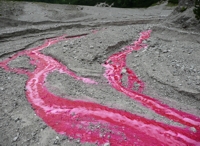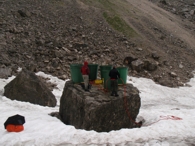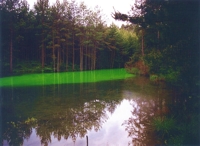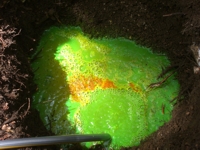Wasser und Umwelt - Tracer experiments
Labeling experiments can provide accurate information about the flow direction of groundwater. Fluorescent dyes such as uranine, eosin or rhodamine are added to the water as tracer. The dye is analyzed via in situ measurements or sampling at several sampling points and provides information about flow rates, direction of propagation, duration of stay, and dilution processes.
 |
 |
 |
 |
|
Rhodamin
|
Hochgebirge
|
Seeschwinde
|
Grundwasser
|
Fluorescent dyes are the most commonly used materials for surface water labeling. They do not naturally occur in the environment and can be detected reliably and accurately at very low concentrations.
Uranine (Fluorescein) works well for groundwater labeling as it has a low sorption. For surface waters, uranine is rather unsuitable because it is sensitive to light. Very good detection limit of approximately 0.000000001g/L.
Eosin can be applied similarly as uranine – with a slightly stronger sorption and also sensitive to light. Detection limit of approximately 0.00000001g/L.
Rhodamine is resistant to light, therefore applicable for surface water labeling. Rhodamine B has strong sorptive properties, so it cannot usually be used for pore water labeling.
Deuterium is very suitable for the labeling of groundwater. It is not visible; it behaves as the water molecule. Very suitable for determining catchments of protected areas.
Bromid as a low cost and water-soluble salt is very well applicable due to its low natural abundance.
